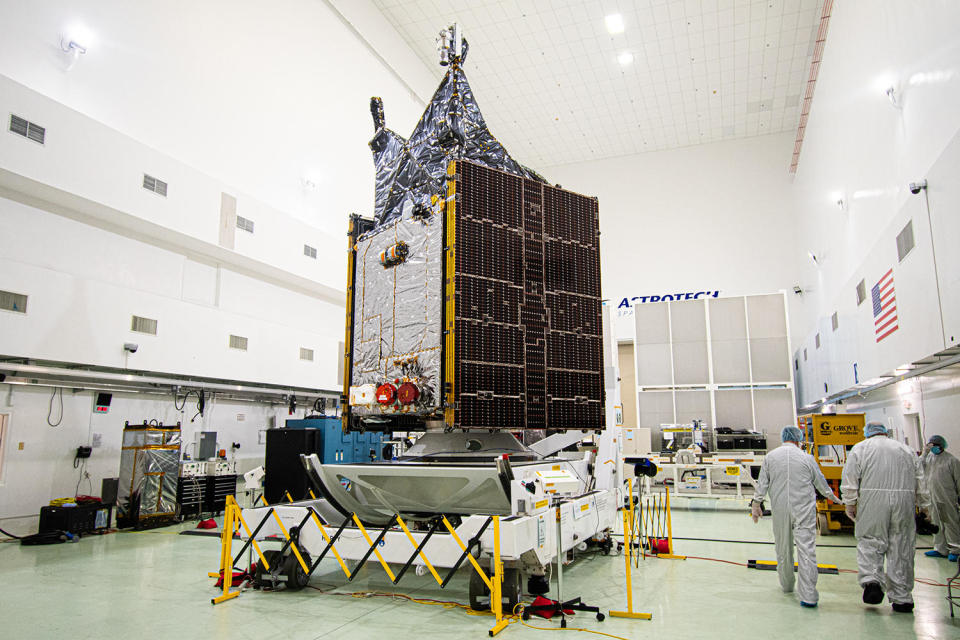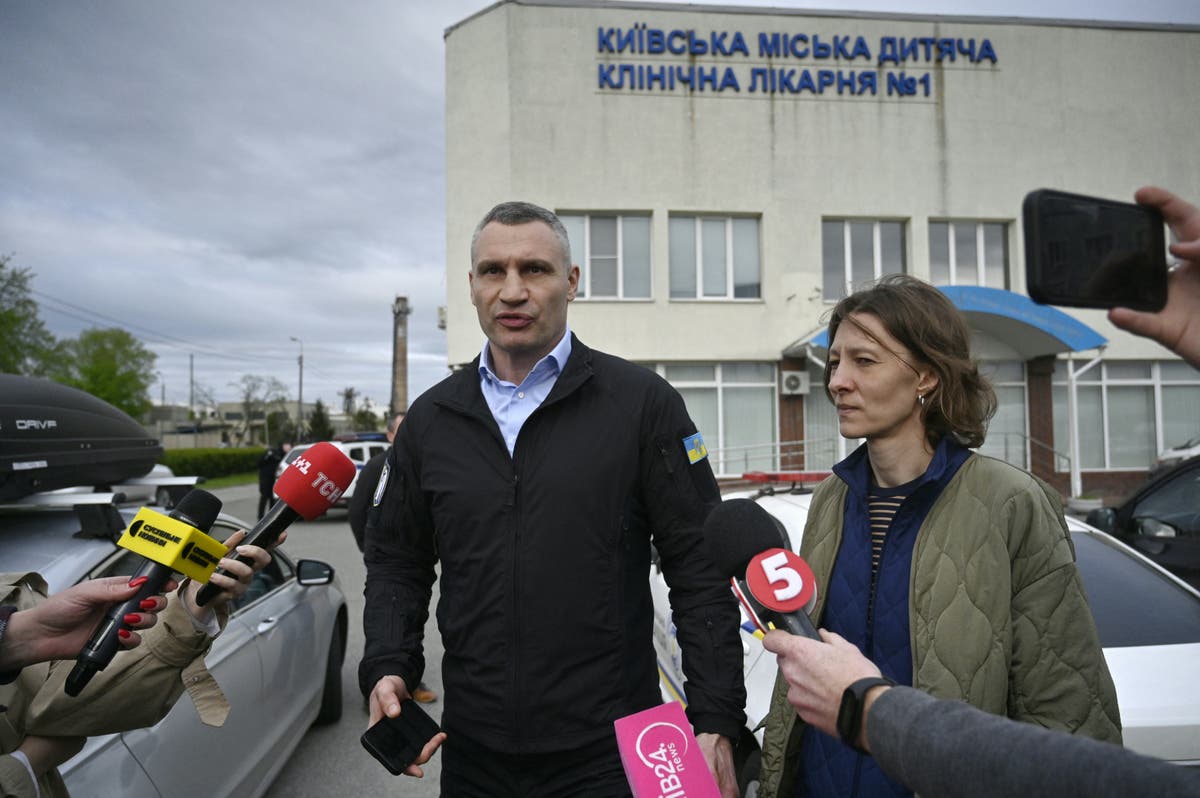Just two weeks before launch, in what amounts to a lucky break, engineers discovered a potentially-crippling problem with thrusters in NASA’s Psyche asteroid probe. Equally fortuitous, the fix was relatively straightforward and launch of the $1.2 billion mission only slipped a week.
“We really found out by weird chance that the data that had come from the subcontractor about these cold gas thrusters was incorrect, and that we had to change our parameters for how we’re going to operate the mission,” Principal Investigator Lindy Elkins-Tanton said Saturday.
“Nobody likes to slip, and it always looks like ‘oh my God, you’re in trouble.’ But oh, we are so lucky!”
Launch from the Kennedy Space Center atop a powerful SpaceX Falcon Heavy rocket is now targeted for 10:16 a.m. EDT on Oct. 12. If all goes well, the spacecraft will reach its quarry in the summer of 2029 after a 2.2-billion-mile voyage, kicking off two years of close-range observations.
Psyche’s target is an unusual asteroid of the same name, one of just seven or eight metal-rich bodies in the rocky belt of debris between Mars and Jupiter. It orbits the sun three times farther out than Earth.
Scientists don’t know what they will find when the spacecraft gets there, but long-range observations indicate the potato-shaped body, measuring 173 miles across at its widest, could be a remnant of core material from a planetary building block known as a planetesimal.
Studying Psyche is expected to shed light on how the solar system’s rocky planets — Mercury, Venus, Earth and Mars — formed and evolved in the distant past.
NASA capsule brings home asteroid samples dating back to the birth of the solar system
The high-profile mission suffered a major delay last year when software development and testing fell behind schedule, in part because of earlier COVID-related policies and work slowdowns. An independent review board also found multiple contributing factors, including poor communications at the Jet Propulsion Laboratory and insufficient planning and oversight.
After resolving those issues, the team was back on track for launch on Oct. 5.
But on Sept. 22, two weeks before takeoff, Elkins-Tanton heard about the thruster issue and six days later, after Spaceflight Now reported a one-week slip, NASA confirmed the flight had been delayed to Oct. 12 “to complete verifications of the parameters used to control the Psyche spacecraft’s nitrogen cold gas thrusters.”
The blog post said operating parameters were being adjusted “in response to updated, warmer temperature predictions for these thrusters.” No other details were provided.

Elkins-Tanton discussed the problem Saturday during a presentation at the Sands Space History Center just outside the Cape Canaveral Space Force Station. As far as she’s concerned, the Psyche mission dodged a bullet by discovering the thruster issue before launch, even if it meant a delay.
Quoting Jet Propulsion Laboratory Director Laurie Leshin, Elkins-Tanton said “a successful mission is dodging 1,000 bullets, and an unsuccessful one is dodging 999.”
“Thank God, we’ve got this great team and that we found (this problem). And so I have … total gratitude that they found this before we launched. And it was just fortuitous. It’s a good story.”
The issue was discovered during pre-flight tests that showed the settings used to operate the thrusters were incorrect. At the planned 80 percent power level, analysis indicated higher-than-expected temperatures could cause damage.
As it turned out, the fix did not require any hardware or software changes. Just an updated table of parameters used by the probe’s flight computer, instructing it to fire the thrusters at what amounts to a lower power level. Maneuvers will take longer to complete, but that will not affect the mission.
“Right after separation from the rocket, one of the things we need to do after we extend the solar arrays is turn to face Earth,” Elkins-Tanton said. “And that turning is accomplished by firing the cold gas thrusters, of which we have 12.
“In order to keep the temperature low enough … we have to do it at 30 percent duty cycle instead,” she said. “The reason we need that extra week is just to make certain that that doesn’t have some downstream effect that we would need to take care of.”
Asked what might have happened had Psyche been launched “as is,” Elkins-Tanton said the higher temperatures “would probably damage the thruster. It could have had a real mission impact. Thank God, we’ve got 12 of them.”
By catching the problem before launch, the team could “analyze it so that we really understand everything about it and what all the nearby thermal sensors will be measuring and how they relate to the temperature in the thruster and everything else.”
“If this happened during initial checkout, there’s a lot on people’s minds, it’d be much harder to understand it to this level. So (the delay is) really good.”
Rise, fall of Sam Bankman-Fried, FTX at center of Michael Lewis’ new book | 60 Minutes

Daisy Hips is a science communicator who brings the wonders of the natural world to readers. Her articles explore breakthroughs in various scientific disciplines, from space exploration to environmental conservation. Daisy is also an advocate for science education and enjoys stargazing in her spare time.








